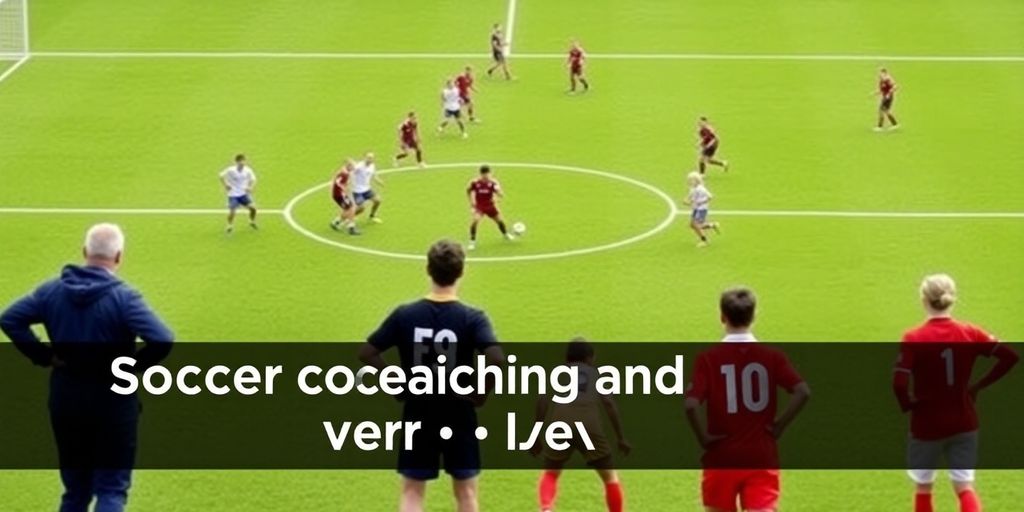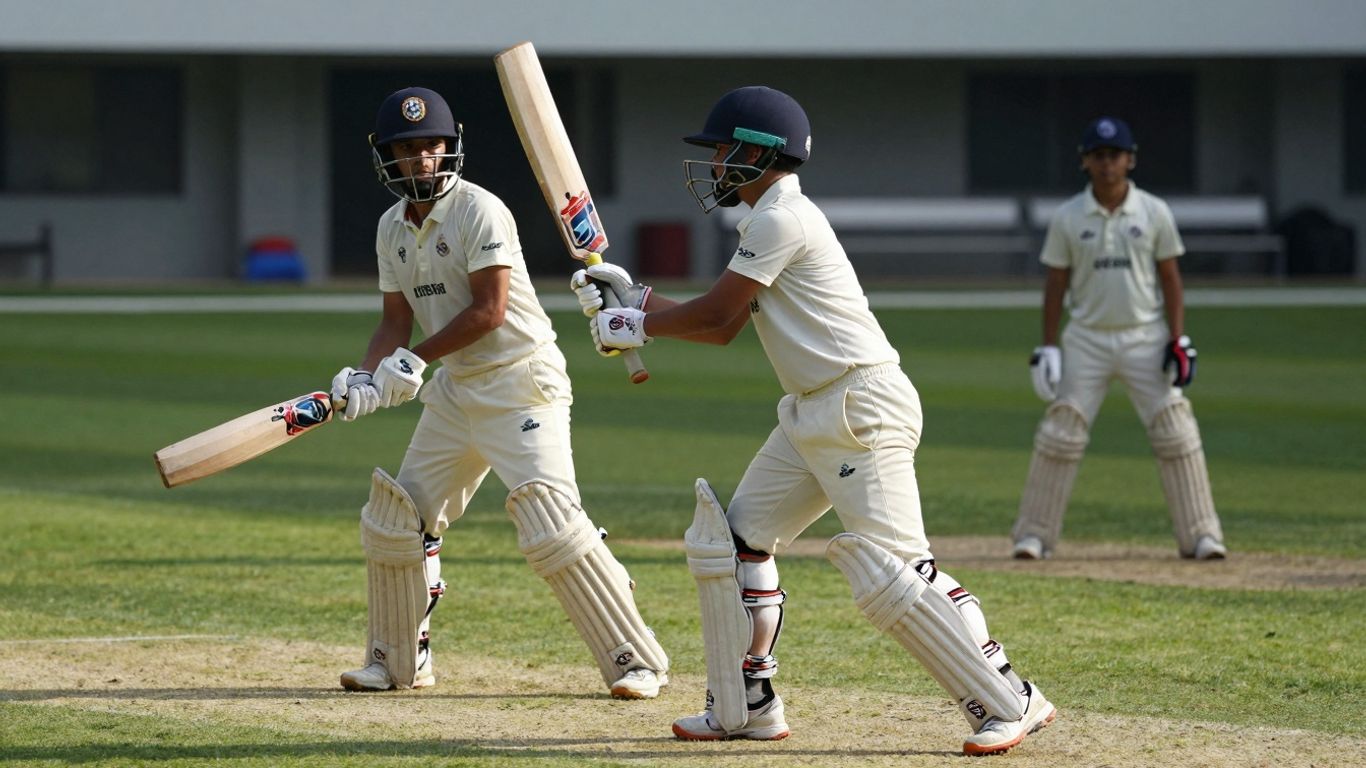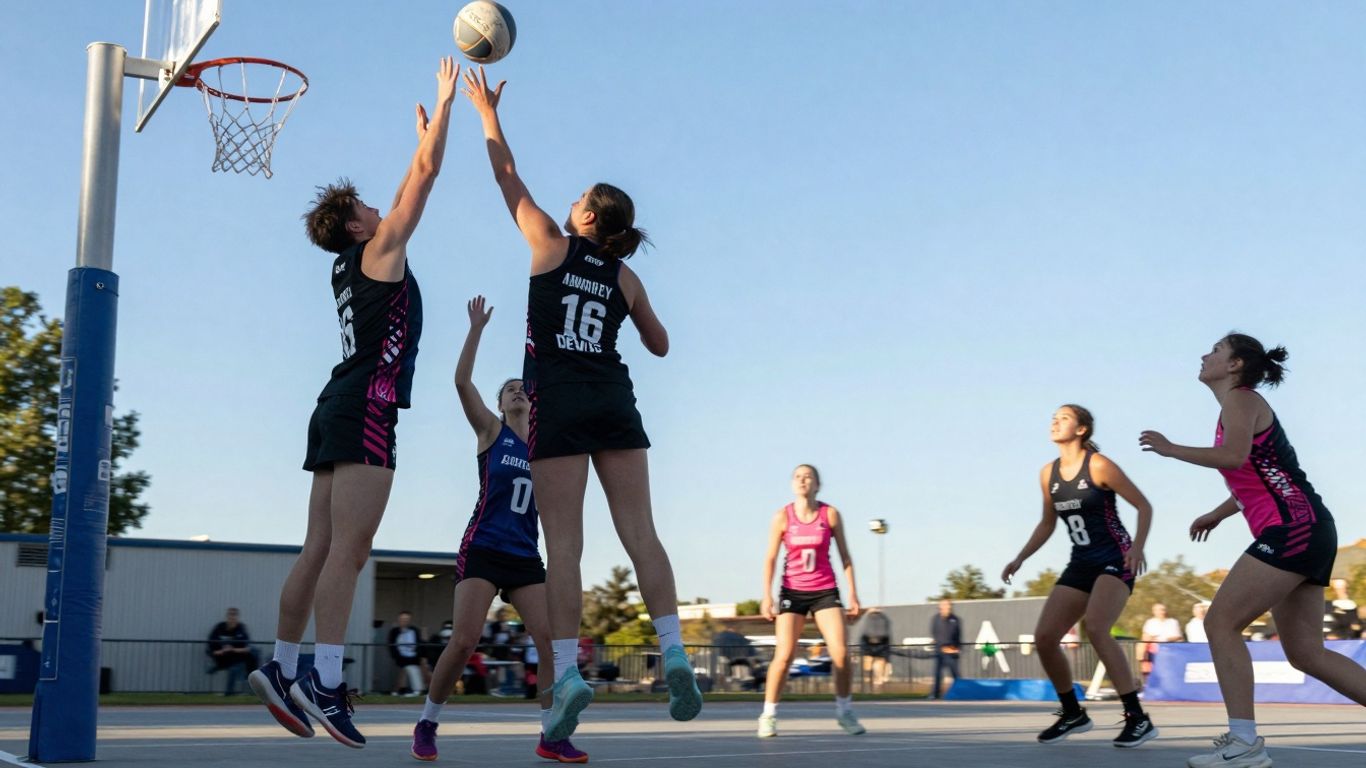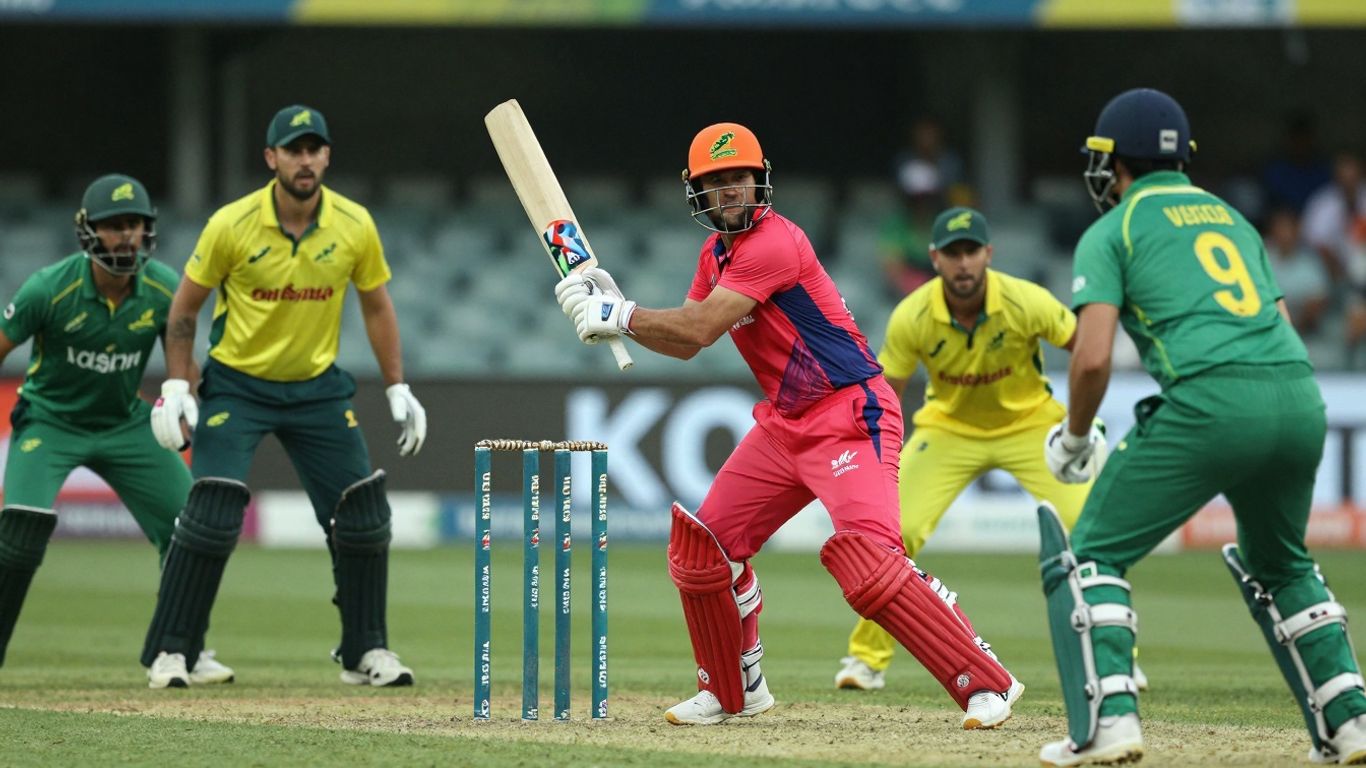Soccer formations are vital in shaping how a team plays on the pitch. Understanding different setups can help coaches and players optimise their strategies and adapt during matches. This guide covers everything from classic formations to modern tactics, offering insights that can elevate your game.
Key Takeaways
- Formations are crucial for team organisation and strategy on the field.
- Classic formations like 4-4-2 and 4-3-3 still hold relevance in modern play.
- Modern tactics, such as the 4-2-3-1, offer flexibility and adaptability during matches.
- Defensive strategies, including zonal and man-to-man marking, are essential for solidifying backlines.
- Training drills tailored to specific formations can improve team cohesion and performance.
Understanding Soccer Formations
The Importance of Formations
Right, so, formations in soccer – they’re not just some fancy diagrams coaches draw up to look smart. They’re actually super important. Think of them as the skeleton of your team. A good formation provides structure, balance, and a clear plan for both attack and defence. Without one, you’re basically just chucking 11 players onto the pitch and hoping for the best, which, let’s be honest, rarely works out. Understanding soccer positions is key to understanding formations.
- A solid formation helps players understand their roles and responsibilities.
- It makes it easier to defend as a unit.
- It provides a framework for attacking plays.
A well-chosen formation can mask individual weaknesses and amplify team strengths. It’s about finding the right system that allows your players to shine and work together effectively.
How Formations Influence Play
Okay, so you’ve got your formation. Now what? Well, the formation you choose has a massive impact on how the game unfolds. A more attacking formation, like a 4-3-3, will naturally lead to more forward play and hopefully more goals. But it might also leave you a bit exposed at the back. A defensive formation, like a 5-3-2, will make you harder to break down, but you might struggle to create chances. It’s all about trade-offs. The formation dictates where players are positioned, how they move, and how they interact with each other. It affects the team’s strategy, influencing everything from passing patterns to pressing triggers.
Adapting Formations During Matches
This is where things get interesting. Sticking rigidly to one formation for the entire 90 minutes is rarely a winning strategy. Good coaches are always thinking, always analysing, and always ready to make changes. Maybe you’re chasing a goal and need to throw more attackers on. Maybe you’re defending a lead and need to shut up shop. Being able to switch formations mid-game is a crucial skill. It’s not just about changing the shape, though. It’s about communicating those changes to the players and ensuring they understand their new roles. It’s about in-game formation changes and reacting to what’s happening on the pitch.
Here’s a simple example:
| Situation | Original Formation | New Formation | Reason |
|---|---|---|---|
| Trailing by 1 goal | 4-4-2 | 4-3-3 | Add more attacking players |
| Leading by 1 goal | 4-4-2 | 5-3-2 | Strengthen defence, see out the game |
Classic Soccer Formations
Alright, let’s get into some of the old-school formations that have stood the test of time. These are the ones you’ll still see kicking around, even with all the fancy modern tactics. They’re classics for a reason – simple, effective, and a good base to build from.
4-4-2 Formation
The 4-4-2 is like the meat and potatoes of soccer formations. It’s balanced, reliable, and easy to understand. You’ve got your four defenders, four midfielders, and two strikers up front. It’s all about solid defence and quick transitions.
Think of it this way:
- Two banks of four make it tough to break down.
- The two strikers can cause headaches for defenders.
- It’s great for winning the ball back in midfield.
It’s not the flashiest, but it gets the job done. It’s a great starting point for any team looking for stability. You can use soccer position coaching services to train your players in this formation.
4-3-3 Formation
The 4-3-3 is where things start to get a bit more exciting. It’s all about attack, attack, attack! You’ve still got your four defenders, but now you’ve got three midfielders and three forwards. This formation is designed to stretch the opposition and create space.
Here’s the lowdown:
- Three forwards provide plenty of attacking options.
- Midfielders need to be box-to-box dynamos.
- Fullbacks need to support the attack.
The 4-3-3 is perfect for teams that want to dominate possession and put the opposition under pressure. It requires a lot of energy and commitment, but the rewards can be huge. It’s all about getting the ball forward quickly and creating chances.
3-5-2 Formation
The 3-5-2 is a bit of a gamble, but it can pay off big time. You’ve got three defenders, five midfielders, and two strikers. This formation is all about overloading the midfield and creating a numerical advantage. It can be tricky to pull off, but when it works, it’s a sight to behold.
Key things to remember:
- Wing-backs are crucial for providing width.
- Midfielders need to be disciplined and hard-working.
- Defenders need to be comfortable playing in a back three.
| Position | Role |
|---|---|
| Centre-Backs | Organise defence, win aerial duels |
| Wing-Backs | Provide width, defend and attack |
| Midfielders | Control tempo, win possession |
| Strikers | Score goals, create chances |
The 3-5-2 is a high-risk, high-reward formation. It requires a lot of tactical understanding and communication, but it can be devastating against the right opposition. It’s all about controlling the midfield and creating opportunities for your strikers. You can learn more about bicycle kick techniques to improve your game.
Modern Soccer Formations

Modern soccer has seen a shift towards more flexible and adaptable formations. Coaches are always looking for ways to gain an edge, and these modern setups reflect that. It’s all about being able to switch things up mid-game and exploit any weaknesses in the opposition.
The Rise of the 4-2-3-1
The 4-2-3-1 has become super popular, and for good reason. It offers a great balance between attack and defence. You’ve got two holding midfielders who can shield the back four, while the three attacking midfielders can cause all sorts of problems for the other team. The lone striker needs to be strong and good in the air, but also capable of linking up with the midfield. It’s a formation that requires discipline and hard work from everyone, but when it clicks, it’s really effective. The 4-2-3-1 formation is a modern staple.
Utilising the 5-3-2
The 5-3-2 is all about being solid at the back. With three centre-backs, it’s tough to break down, and the wing-backs can provide width going forward. It’s a formation that’s often used by teams who want to frustrate their opponents and hit them on the counter-attack. It requires a lot of communication and understanding between the defenders, but it can be a real pain to play against.
The Flexibility of the 4-1-4-1
The 4-1-4-1 is a bit of a chameleon formation. It can be defensive when needed, with the single holding midfielder dropping deep to protect the back four. But it can also be attacking, with the four midfielders pushing forward to support the striker. It’s a formation that requires players who are comfortable in multiple roles and can adapt to different situations. It’s all about being able to control the midfield and dictate the tempo of the game.
This formation is all about adaptability. It allows a team to quickly transition from defence to attack, making it difficult for opponents to predict their next move. The key is having players who are versatile and can perform multiple roles effectively.
Here’s a quick comparison of these formations:
| Formation | Strengths | Weaknesses |
|---|---|---|
| 4-2-3-1 | Balanced, good attacking options | Can be vulnerable to counter-attacks if midfielders are caught out of position |
| 5-3-2 | Solid defensively, difficult to break down | Can lack attacking creativity |
| 4-1-4-1 | Flexible, adaptable to different situations | Requires players who are comfortable in multiple roles |
These modern formations are all about giving coaches options and allowing teams to adapt to different opponents and situations. It’s an exciting time for soccer tactics, and I can’t wait to see what new formations emerge in the future. Understanding soccer position coaching services is key to mastering these formations.
Defensive Soccer Formations

Alright, let’s chat about keeping the ball out of our own net. It’s not always about scoring goals; sometimes, the best strategy is a solid defence. We’re going to look at some common defensive tactics that coaches use to frustrate the opposition and keep a clean sheet.
Zonal Marking Strategies
Zonal marking is all about assigning players to defend specific areas of the pitch, rather than sticking to individual opponents. This means players need to be aware of their surroundings and communicate effectively to cover any gaps. It’s like having invisible fences that the opposition can’t cross without being challenged.
- Players must maintain their positions within the zone.
- Constant communication is key to avoid overlaps and gaps.
- Adaptability is important, shifting zones as the ball moves.
Man-to-Man Marking
Man-to-man marking is pretty straightforward: each defender is responsible for sticking to a specific opposition player like glue. It’s a more aggressive approach than zonal marking, aiming to disrupt the opponent’s key players and prevent them from getting into dangerous positions. It can be tiring, but effective if done right. You need players with stamina and focus for this one. It’s a classic strategy, but it requires discipline. For further reading on soccer defensive formations, check out our comprehensive blog on different defensive setups and their strategic applications.
- Requires excellent fitness and concentration.
- Can be vulnerable to clever movement and decoys.
- Effective at neutralising key opposition players.
The Role of Sweeper
The sweeper is a bit of a throwback position, but it can still be effective in certain situations. The sweeper plays behind the main defensive line, acting as a last line of defence to mop up any loose balls or deal with through balls that get past the defenders. It requires a player with good reading of the game and excellent tackling ability.
The sweeper role isn’t as common these days, but when used effectively, it can provide an extra layer of security and allow the other defenders to take more risks knowing they have cover. It’s all about having that safety net at the back.
Here’s a quick comparison of the marking strategies:
| Strategy | Focus | Strengths | Weaknesses |
|---|---|---|---|
| Zonal Marking | Defending specific areas | Organised, less tiring | Vulnerable to clever movement, communication |
| Man-to-Man | Marking individual opponents | Disrupts key players, aggressive | Tiring, vulnerable to decoys |
| Sweeper System | Last line of defence, covering runs | Provides extra security, intercepts passes | Relies on individual skill, can be isolated |
Attacking Soccer Formations
Creating Space with 4-3-3
The 4-3-3 is a classic attacking formation, and for good reason. It’s all about stretching the play and creating opportunities for your forwards. The key is having wingers who can beat their defenders and a striker who’s clinical in front of goal.
- Width is crucial: Wingers stay wide to stretch the defence.
- Midfield support: Midfielders provide passing options and support the attack.
- Overlapping fullbacks: Fullbacks can overlap to create overloads.
The 4-3-3 relies on quick transitions and exploiting space. It’s not just about chucking everyone forward; it’s about calculated risks and coordinated movement.
Utilising Width in 3-4-3
The 3-4-3 is an even more aggressive formation than the 4-3-3. It sacrifices some defensive stability for extra attacking firepower. You’re essentially playing with three forwards, aiming to overwhelm the opposition’s backline. It’s a risky strategy, but when it works, it’s devastating. This formation is great for soccer position coaching.
- Wing-backs are vital: They provide width and track back to defend.
- Central midfielders control the tempo: They dictate the pace of the attack.
- Communication is key: The three forwards need to be on the same wavelength.
Counter-Attacking with 4-2-4
The 4-2-4 is a very attacking formation that is rarely seen these days. It’s all about hitting the opposition on the break with pace and power. It’s a high-risk, high-reward strategy that can leave you exposed at the back, but if you have the right players, it can be incredibly effective. It’s a formation that requires a lot of discipline and fitness from the players, as they need to be able to transition quickly from defence to attack. The 4-2-4 formation is a disciplined structure that ensures that the team can thwart opposition attacks, regain possession efficiently, and launch counter-attacks.
- Two holding midfielders: They protect the defence and win the ball back.
- Pacey wingers: They stretch the play and deliver crosses.
- Two strikers: They provide a constant threat in the box.
| Player Role | Responsibilities |
|---|---|
| Holding Midfielders | Protect defence, win back possession |
| Wingers | Stretch play, deliver crosses |
| Strikers | Provide constant threat in the box |
Tactical Adaptations in Soccer
In-Game Formation Changes
Sometimes, what you planned before the match just isn’t working. Maybe the other team is playing differently than you expected, or maybe your key player had a rough night’s sleep. That’s where in-game formation changes come in. It’s about being flexible and making smart adjustments on the fly. A coach needs to be able to read the game and tweak the formation to gain an advantage.
- Switching from a 4-4-2 to a 4-3-3 to add more attacking power.
- Dropping into a 5-3-2 to shut down a strong opponent attack.
- Moving players around to exploit weaknesses in the other team’s setup.
Responding to Opponent Strategies
Soccer is like a chess match – you’ve got to think a few steps ahead. If the other team is playing a high-pressing game, you might need to switch to a formation that allows for quicker counter-attacks. Or, if they’re packing the midfield, you might need to spread the play wider. It’s all about reacting to what they’re doing and finding ways to disrupt their game plan. Understanding soccer position coaching services is key to making these adjustments effectively.
Utilising Player Strengths
Every player has their own unique set of skills and abilities. Some are speed demons, others are tackling machines, and some have a knack for scoring goals. A smart coach will build the formation around the strengths of their players. If you’ve got a striker who’s great in the air, you might want to play a formation that gets more crosses into the box. Or, if you’ve got a midfield maestro, you might want to give them the freedom to roam and dictate the play. It’s about getting the most out of what you’ve got. Here’s a quick look at how different formations can highlight player strengths:
| Player Type | Formation Example | Benefit |
|---|---|---|
| Fast Wingers | 4-3-3 | More opportunities for 1-on-1s |
| Strong Central Mids | 4-2-3-1 | Provides defensive cover and playmaking |
| Clinical Finisher | 4-4-2 | Consistent service from wide areas |
Adapting to the flow of the game is essential. Sometimes, a pre-planned strategy needs to be thrown out the window in favour of something that better suits the current situation. It’s about being pragmatic and making decisions that give the team the best chance of success, even if it means deviating from the original plan. Don’t forget to check out the latest trends in personalised soccer balls to keep your team looking sharp!
Training for Soccer Formations
Drills for Formation Mastery
Okay, so you’ve got your formation sorted – 4-3-3, 4-4-2, whatever floats your boat. But knowing the formation is only half the battle. You’ve gotta drill it into the players until it’s second nature. We’re talking muscle memory, folks. Think about it:
- Repetition is key. Run the same drills over and over. It might seem boring, but it’s how they learn to anticipate each other’s movements.
- Small-sided games are your best mate. 5v5, 7v7 – focus on specific aspects of the formation. For example, if you’re working on a 4-3-3, set up a drill that emphasises the wingers creating space with 4-3-3 and their runs.
- Use cones and markers to simulate opposition players. This helps players visualise the space and make quick decisions.
Don’t just tell them what to do; show them. Walk them through the movements, explain the reasoning behind each pass, each run. Get them to talk to each other, communicate, and build that understanding.
Position-Specific Training
Right, so everyone knows their general role in the formation, but what about the specifics? A centre-back in a 4-4-2 has different responsibilities than a centre-back in a 3-5-2. You need to tailor your training to each position.
- For defenders, focus on tackling, marking, and clearing the ball. Work on their positioning and communication.
- Midfielders need to work on passing, controlling the ball, and supporting both the attack and defence.
- Forwards need to practise their shooting, dribbling, and making runs in behind the defence.
Here’s a quick table to give you some ideas:
| Position | Key Skills | Drills |
|---|---|---|
| Centre-Back | Tackling, Marking | 1v1 defending, zonal marking drills |
| Central Mid | Passing, Ball Control | Passing triangles, possession games |
| Winger | Dribbling, Crossing | Dribbling slalom, crossing from wide areas |
| Striker | Shooting, Runs | Finishing drills, runs in behind |
Building Team Cohesion
Look, you can have the best players in the world, but if they don’t play as a team, you’re buggered. Building team cohesion is about getting the players to trust each other, to understand each other’s strengths and weaknesses, and to work together towards a common goal. This is where the magic happens.
- Team-building exercises are your friend. Get them doing stuff off the pitch – go-karting, trivia nights, whatever. It helps them bond.
- Encourage communication on and off the pitch. Get them talking to each other, giving each other feedback.
- Set clear goals and expectations. Make sure everyone knows what they’re working towards.
It’s not just about the tactics; it’s about the people. Get them working together, and you’ll see a massive difference in their performance. Remember to check out some soccer position coaching services to help your players understand their roles.
Wrapping It Up
So there you have it. Mastering soccer formations isn’t just about knowing the numbers; it’s about understanding how to use them effectively on the pitch. Whether you’re a coach or a player, the key is to stay flexible and adapt to what’s happening in the game. Try out different formations, see what works best for your team, and don’t be afraid to mix things up. Remember, every match is a chance to learn and improve. Keep practising, keep experimenting, and most importantly, enjoy the game!
Frequently Asked Questions
What is a soccer formation?
A soccer formation is how players are arranged on the field. It helps teams organise their play and decide how to attack or defend.
Why are formations important in soccer?
Formations are important because they shape how a team plays. They determine how players work together and can affect the game’s outcome.
Can teams change their formation during a match?
Yes, teams can change their formation during a match. Coaches often do this to respond to the other team’s tactics or to improve their own play.
What are some classic soccer formations?
Classic formations include the 4-4-2, 4-3-3, and 3-5-2. Each has its strengths and weaknesses depending on the team’s strategy.
How do modern formations differ from classic ones?
Modern formations, like the 4-2-3-1 or 5-3-2, often focus more on flexibility and can adapt quickly to different situations on the field.
What training is needed to master soccer formations?
To master formations, players need specific drills that focus on their positions and teamwork. This helps them understand their roles better.





